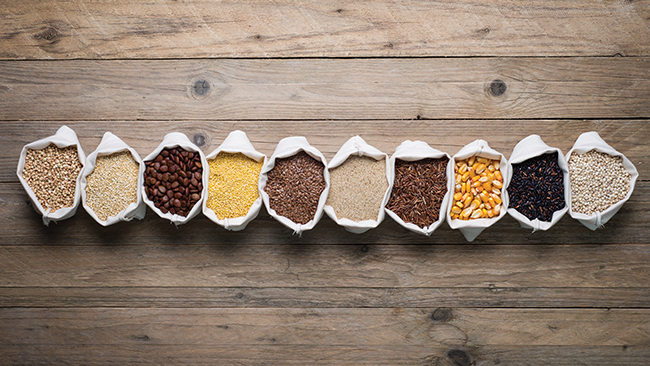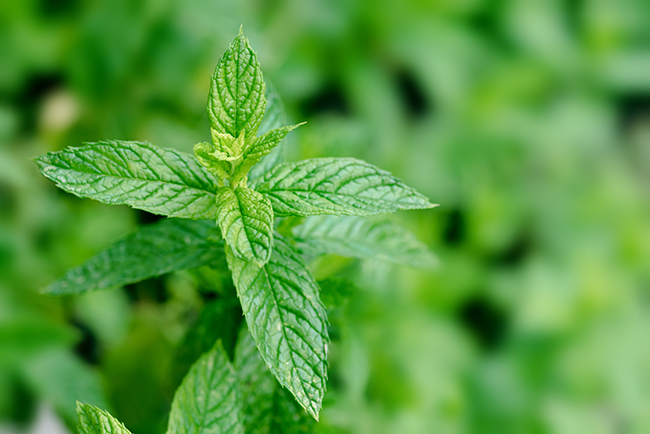Charlotte Willis delves deep into the scientific world to get to grips with how and why gluten rears its ugly head, and what we can do to relieve the symptoms of an unexpected gluten-sensitivity attack…

I think we’ve all been in a similar boat at some point in our journeys with food intolerances. You disclose your gluten-intolerance to a friend or colleague, and wait, dreading the aftermath. We prepare for the inevitable. The eye rolling, the sarcastic comments, those mind-numbingly tedious questions.
My personal favourite? “Oh doesn’t this look good. How good does this look? I bet you wish you could eat this don’t you? Oh what a shame. You must really miss not eating this. Poor you.”
The problem with being gluten sensitive, gluten intolerant or indeed medically diagnosed with coeliac disease, is that most people, or at least in my experience, believe you are limiting yourself out of free will.
Yes, despite the fact that eating even a slice of conventional bread would leave you curled up in pain, producing methane to almost cattle-esquc levels, most will impart their ill-informed sceptical view. Sandra, stop judging me. Eat your baguette and be quiet. Thanks.
The Sensitive Subject
When you face the facts, there are multiple different conditions of intolerance to grains, including Gluten Ataxia (a form of extremely rare autoimmune disorder), Dermatitis Herpetiformis (a red and blotchy skin rash that appears after the consumption of gluten), and the most common, Coeliac disease.
However, I know of individuals, myself included, who experience difficulty in the digestion of gluten and wheat products that most health practitioners ignore. I’m talking about gluten sensitivity, a condition which shares such problematic symptoms as gluten intolerance or allergy, without a formal medical diagnostic category.

But what exactly causes these sensitivities and intolerances? And most importantly, what can we do to help reduce the symptoms of an unexpected gluten-sensitivity attack? I delved deeper into the biological side of gluten digestion to find out.
Round One: Enzymes Vs Gluten
Gluten is a globular storage protein found within plant cells, primarily found in the endosperm layer of seed grains such as wheat, barley and rye. Gluten is a compact molecule, consisting of differing strands of gliadin and glutenin, packed and bound together tightly (imagine a really clingy couple hugging together, hard to separate!).
Gluten is also highly branched, with many other amino acids (protein strands) attached to its structure. Upon ingestion, enzymes secreted from the stomach, walls of the intestine and the pancreas directly act upon the globular protein molecules in an attempt to break them down into smaller protein molecules and amino acids which can be absorbed by the large and small intestine.

However, so bound together are the gluten proteins, that regular enzymatic protein-digestion is simply not effective. Instead, enzymes acting upon gluten break the molecules down into longer chains of amino acids, known as oligopeptides.
From here onwards, many of us experience difficulties in digesting these structures. Those without sensitivity or intolerance will be able to further digest the oligopeptides, and pass the discarded matter in their stool.
Round Two: Oligopeptides Vs Your Intestine
The problem a sensitive individual’s digestive system has with processing these oligopeptides is related directly to their length and complexity. While your gut bacteria put up a good fight in attempting to help digest the long-chained protein molecules, these stubborn structures often find a way to irritate the cells of the intestine, blocking absorption and triggering the body’s natural immune response.
An inability to digest the large, branched protein causes a rush of T-Cells (immune system soldiers) to flood towards the intestine. An immune assault is launched on your GI tract, resulting in inflammation as cells rush to help resolve the issue.

Gliadin chains are some of the most troublesome of offenders. Just it’s presence can result in an aggressive immune response in some of the most sensitive of individuals.
Those of us with coeliac experience a far more severe, and indeed toxic, reaction to the gluten proteins. The oligopeptides cause an extreme immune cell response, during which cells begin clumping together in an attempt to reduce proliferation of the proteins from invading the body. Severe inflammation, cell damage and eventually cellular death occurs. That bread basket never looked so lethal!
The Proving Process
Pioneering the way in understanding our digestive systems, The Columbia University Medical Centre hoped to shed some light upon the mystery of dietary sensitivity once and for all. Their research in 2016 would answer the question on every tentative gluten-consumer’s lips. They scientifically researched a specific gluten sensitivity called non-coeliac wheat sensitivity (NCWS) for the first time, finding an explanation for what many of us would consider a taboo digestive condition once and for all.
Those examined with NCWS presented a systematic immune system activation upon the consumption of gluten due to the increased circulation of dietary components and gut bacteria into the bloodstream. The result? These participants’ bodies began to exhibit a generalised immune response to these leaked substances from the intestinal wall throughout the body, similar to that experienced in coeliac disease and other recognised gluten allergies.

The researchers concluded: “It demonstrates that there is a biological basis for these (sensitivity) symptoms in a significant number of patients. It is estimated to affect about 1% of the population, roughly the same prevalence as coeliac disease.”
Finally, there is a growing area of research into a dietary issue affecting millions of people across the globe. Now I don’t know about you, but I am intrigued to see where this area of nutritional science will lead in the future, and how this may affect diagnosis.
How To Spot The Signs
But what if you think you may be sensitive to gluten, or indeed completely intolerant? Well, one of the easiest ways to find out is to maintain a food diary of everything you eat in a day along with your symptoms experienced and their apparent severity. This seems like a bothersome task, but keeping a note of your digestive system’s responses to certain foods will save you the pain, discomfort and potential embarrassment later on in your life (no one wants to be mistaken for pregnant after devouring that bread basket on a dinner date now, do they?).
Download apps such as myfitnesspal, or simply make a note on your phone to help you keep a track of your dietary habits. It could be that other food groups, such as the fibrous brassica family (cabbages, broccoli, kale) or certain members of the onion family (leeks, spring onion) cause you to flare up regardless of your grain intake.
Listen to your body. I know far too many people with intolerances who still continue to consume forbidden ingredients, knowing full well they will be writhing in pain later on. If there’s something your body refuses to accept, then stop eating it! It really is that simple. It doesn’t make you faddy, nor does it make you a crowd follower or a slave to Instagram-trends. It makes you a sensible individual who cares about their digestive health!
Gluten recovery: SOS
Picture the scene. You’re out at dinner, order a gluten-free main, and come home later feeling as if you’ve been punched in the stomach. Accidental consumption is not uncommon, especially when eating out. There are many products that can be contaminated with gluten without even realising, only to assume you’ve been slipped some of the lethal protein upon your digestive woes.
Fear not, helping your body to recover from a gluten-attack can help ease some of the symptoms and…
Hydrate
Keep your body topped up with electrolyte water to reduce dehydration and aid fluid movement. Think natural, and opt for coconut water or a smoothie full of spinach to provide naturally-occurring sodium, a plant-based mylk, some simple sugars (dates or agave syrup will be perfect), bananas for potassium and some seeds for fibre.
Herbalise
Mint tea and ginger will help to ease any digestive cramping you may have, while preventing nausea along the way. The astringent nature of peppermint will also help to increase digestive regularity, which can be taken in the form of capsules. Watermelon is also a fabulous hydration aid.

Boost Your Bacteria
Give your bacteria a helping hand and throw them some fibre. Think gluten-free grains such as rice and buckwheat, fibrous veggies, plenty of salad vegetables and snack on nuts for essential fatty acids.
Keep Warm and Rest
A gluten attack can leave you feeling lethargic, so take the time to listen to your body. Reduce your activity levels and keep a hot water bottle or heat patch nearby to ease cramps and bloating.
About the author
 Charlotte Willis is a student researcher of nutrition and human disease. Studying to become a Doctor of Human Nutrition, she is particularly interested in wholefood, plant-based nutrition and healthful lifestyle intervention in the prevention and reversal of chronic human diseases.
Charlotte Willis is a student researcher of nutrition and human disease. Studying to become a Doctor of Human Nutrition, she is particularly interested in wholefood, plant-based nutrition and healthful lifestyle intervention in the prevention and reversal of chronic human diseases.
